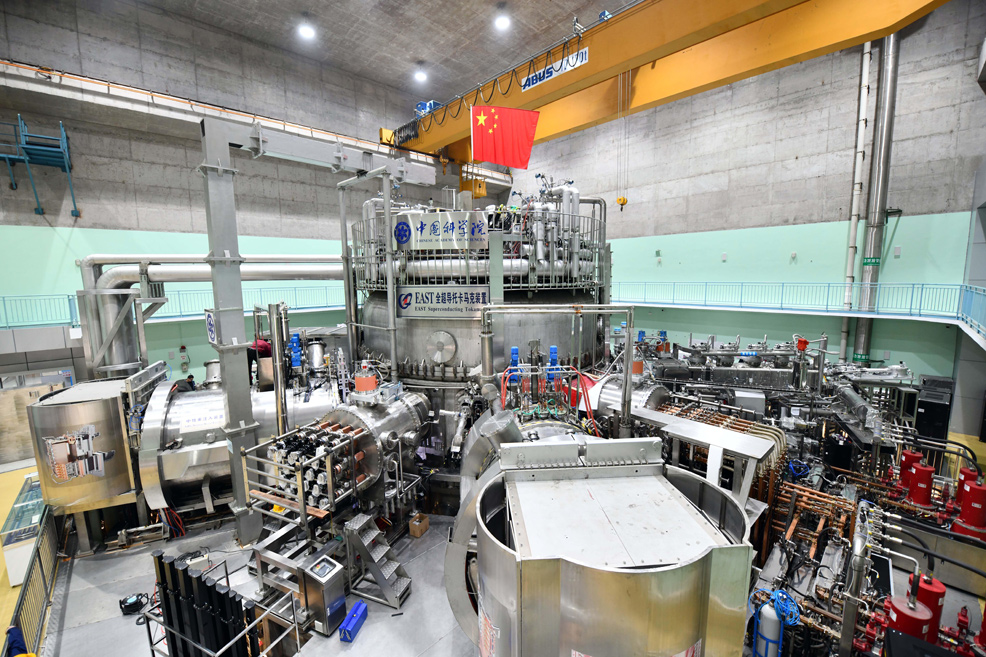
1st June 2021 Chinese fusion reactor sets world record The Experimental Advanced Superconducting Tokamak (EAST) has achieved a new world record for superheated plasma, with its reactor becoming 10 times hotter than the core of the Sun.
China has announced a milestone in the development of clean, sustainable energy by setting a new world record for the longest duration of temperatures needed for fusion to occur. The Experimental Advanced Superconducting Tokamak (EAST) located in Hefei, Anhui Province, is the successor to HT-7, China's first superconducting tokamak, which retired in 2013. The Hefei Institutes of Physical Science (HIPS) is conducting the experiment for the Chinese Academy of Sciences (CAS). Professor Gong Xianzu, a researcher at the CAS Institute of Plasma Physics (IPP) who is leading the project, announced the breakthrough. The reactor achieved not one but two milestones. Firstly it reached a plasma temperature of 120 million degrees Celsius for 101 seconds. This is 20% hotter and five times longer than last year, when EAST managed 100 million degrees Celsius for 20 seconds. Secondly, it reached an even higher peak temperature of 160 million degrees Celsius, lasting for 20 seconds. For comparison, the core of our Sun is "only" 15.7 million degrees Celsius. In other words, the EAST project managed a temperature 10 times greater than the centre of a star.
Credit: NASA's Goddard Space Flight Center
The ultimate goal of EAST is to create nuclear fusion sustained indefinitely, using deuterium to provide a steady stream of clean energy. It is estimated that the deuterium in one litre of seawater could produce, through fusion reactions, the amount of energy equivalent to 300 litres of gasoline. The operation of the doughnut-shaped facility is being supported by 300 scientists and engineers. The experiment includes a vacuum system, RF wave system, laser scattering and microwave system. Preparation and upgrading work for the experiment started about a year ago, the institute said. "It's a huge achievement in China's physics and engineering fields," said Song Yuntao, director of the IPP. "The experiment's success lays the foundation for China to build its own nuclear fusion energy station." China is a member of the ITER consortium, which is currently building the world's largest ever magnetic confinement plasma physics experiment and the largest experimental tokamak nuclear fusion reactor. EAST has been serving as a testbed for ITER technologies before that facility comes online in 2025.
Comments »
If you enjoyed this article, please consider sharing it:
|







